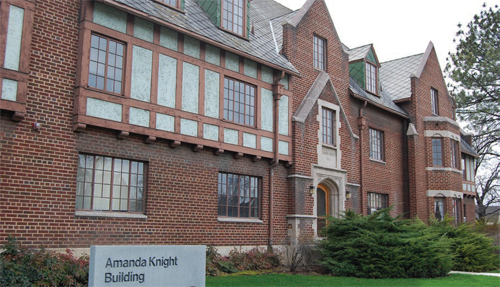Brigham Young University’s historic Amanda Knight Hall is set for a major renovation and conversion to private commercial usage. Mountain Classic Real Estate (MCRE), a Salt Lake City-based investment group known for restoration of historic commercial and multifamily properties, has purchased the property and plans to restore it to its historical gothic-style architectural significance. {mprestriction ids="1,3"}
Located at 800 N. University Ave. in Provo, Amanda Knight Hall was constructed in 1939 as a women’s dormitory and is named after Amanda Knight, the wife of Jesse Knight, a Utah mining magnate who was a member of The Church of Jesus Christ of Latter-day Saints who was a major donor to BYU in the early 20th century. The hall was used as the first Provo Missionary Training Center and later was the location for the Church Language Training Mission (LTC) from 1964 to 1976. Since then, it has served a variety of short-term academic and auxiliary purposes for the university, such as independent study, the English Language Center and other functions of the MTC.
Some of MCRE’s previous projects include the restoration of the Historic Clift and Felt buildings in downtown Salt Lake City and the restoration of the Park Manor Apartments, located on the downtown periphery. Plans for future use of Amanda Knight Hall are currently under development.
“We believe this is one of the most iconic historic residential properties near campus and are grateful to BYU for their vision in recognizing the significance of this building in our historical cultural journal,” said David Phipps, CEO of MCRE. “MCRE focuses on high design developments in the Intermountain West, and our position as the largest renovator of historic buildings in the state stems from the incredible architecture, construction and design that was put into these properties in the early and mid-1900s. We are just very grateful to be able to be involved in bringing the soul back into many of these incredible buildings.”{/mprestriction}





.gif#joomlaImage://local-images/ads/8ade17a8-1d78-11ef-9e00-0242ac110002(1).gif?width=1251&height=1251)
